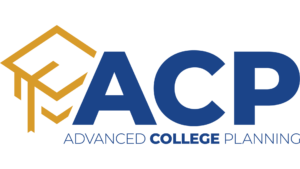Introduction: Welcome to the Age of Smarter College Planning
In 2025, the college admissions landscape is more complex—and competitive—than ever. With acceptance rates dropping at many top schools and students applying to more colleges than before, families can no longer rely solely on traditional planning methods. Instead, the smartest families are turning to Artificial Intelligence (AI) to streamline the process, analyze real-time data, and boost their student’s chances of success.
AI tools now offer far more than just essay editing or generic suggestions. They can analyze academic profiles, predict admission chances, help craft targeted application strategies, and even match students to career-aligned majors based on evolving job market trends. This shift is revolutionizing how students—from high school freshmen to seniors—plan for college.
AI tools can enhance the college planning process by providing useful insights and data-driven support. However, they should not replace the personalized guidance of experienced college planning experts who understand the unique needs, goals, and challenges of each student. In this blog, we’ll explore some of the top AI tools available today, examine how rankings can aid in smarter decision-making, and discuss how to tailor college choices for the greatest long-term impact.
🎓 The Rankings Myth: Why Traditional Lists Aren’t Enough
Many families still start with U.S. News & World Report or Princeton Review rankings. While these can provide a general sense of a school’s reputation, they often miss what matters most—how well a college fits your student. A highly ranked school may not have a strong program in your student’s chosen major, or it may have a hyper-competitive environment that doesn’t suit their learning style.
AI tools help families look past rankings and instead focus on real data:
- Major-specific outcomes (job placement rates, internships, grad school admissions)
- Departmental competitiveness (some majors are significantly harder to get into)
- Learning environment preferences (urban vs. rural, large lecture halls vs. small class sizes)
- Historical admissions data (Common Data Set insights like GPA and test score ranges)
By combining traditional rankings with this deeper layer of AI-driven analysis, families can make far more informed decisions.
📈 The AI Tools Reshaping College Planning
Let’s take a look at the top AI-powered tools being used in college planning today:
🔍 1. Scoir
Scoir is a college discovery and planning tool used by high schools nationwide. It utilizes machine learning to match students with best-fit colleges based on academic data, personal preferences, and behavioral patterns. Its visual college search tools are especially helpful for students just starting out.
🧠 2. CollegeVine
CollegeVine offers a proprietary AI-powered admissions calculator that analyzes your student’s profile (GPA, SAT/ACT scores, extracurriculars, etc.) and compares it to historical data at hundreds of colleges. It also includes essay guidance, live peer reviews, and school-specific strategy suggestions.
🧮 3. MaiaLearning
Used by counselors and educators, MaiaLearning uses predictive analytics and interest inventories to help students explore careers, plan high school courses, and align post-secondary options. It’s a great long-term planning tool that focuses on alignment between student goals and college choices.
📝 4. ChatGPT & AI Writing Assistants
Tools like ChatGPT (yes, like me!) are transforming how students approach their essays. From brainstorming unique story angles to editing grammar and tone, AI helps students create compelling narratives that stand out—without sacrificing their authentic voice.
💡 Want to integrate AI planning into your student’s college roadmap? Visit the Advanced College Planning Workshops to explore our comprehensive, tech-enabled services.
🧭 Using AI to Interpret Rankings the Right Way
AI doesn’t throw rankings out the window—it helps you use them better. Rather than blindly trusting a school ranked #5 nationally, AI tools ask deeper questions:
- Is that school’s engineering program actually stronger than one ranked #12?
- Does it offer better undergraduate research in biology?
- How do alumni outcomes compare in your student’s intended field?
Tools like CollegeVine and Scoir overlay rankings with fit metrics, allowing families to:
- Adjust school lists in real time based on admissions probability
- Identify target, reach, and safety schools more accurately
- Avoid “rank trap” schools that may be prestigious but poor matches
This approach saves time, reduces stress, and increases results.
🧪 Real-World Use: Combining CDS with AI Tools
The Common Data Set (CDS) is one of the most underutilized resources in college admissions. It includes exact data on:
- Admissions criteria
- Average GPA and test scores
- Class rank distribution
- Factors considered “very important”
AI tools pull this data and match it to student profiles in seconds. Instead of scanning PDFs manually, platforms like CollegeVine, Concourse, and AI dashboards do the comparison instantly allowing families to:
- See if a school is a true academic fit
- Understand major-specific selectivity
- Optimize the application list with evidence-backed choices
🎯 How to Use AI for Strategic Application Planning
Here’s how smart families are using AI in 2025:
- Build a Balanced List – Use probability engines to ensure your college list has an even distribution of safety, target, and reach schools.
- Target Popular Majors Strategically – Use CDS and departmental data to assess competitiveness for popular majors like Computer Science or Nursing.
- Customize Essays at Scale – Use AI to tailor supplemental essays without losing personalization.
- Get Instant Feedback – Instead of waiting days for feedback, AI can flag weak spots and optimize responses instantly.
- Monitor Career Trends – Use LinkedIn Learning, O*NET, and career matching AI to align college planning with future job markets.
🧠 Bonus Tip: Leverage AI Early
You don’t need to wait until junior year to benefit from AI tools. Middle and early high school students can use them to:
- Plan high school course loads
- Explore potential majors
- Understand how today’s decisions impact tomorrow’s admissions odds
The earlier you start, the better the insights—and the more time you have to act on them.
✅ Final Thoughts: Let AI Guide, Not Replace, Human Insight
AI is a game-changer in college admissions—but it’s not a replacement for personal guidance. The best outcomes come from combining technology with human expertise. At Advanced College Planning, we work closely with families to interpret AI data, customize application strategies, and make sure each student’s unique story shines through.
📅 Ready to plan smarter, not harder? Schedule your free consultation and see how our AI-driven approach can give your student a competitive edge.
Together, let’s build a strategy that’s future-ready and uniquely tailored to your family’s goals.


